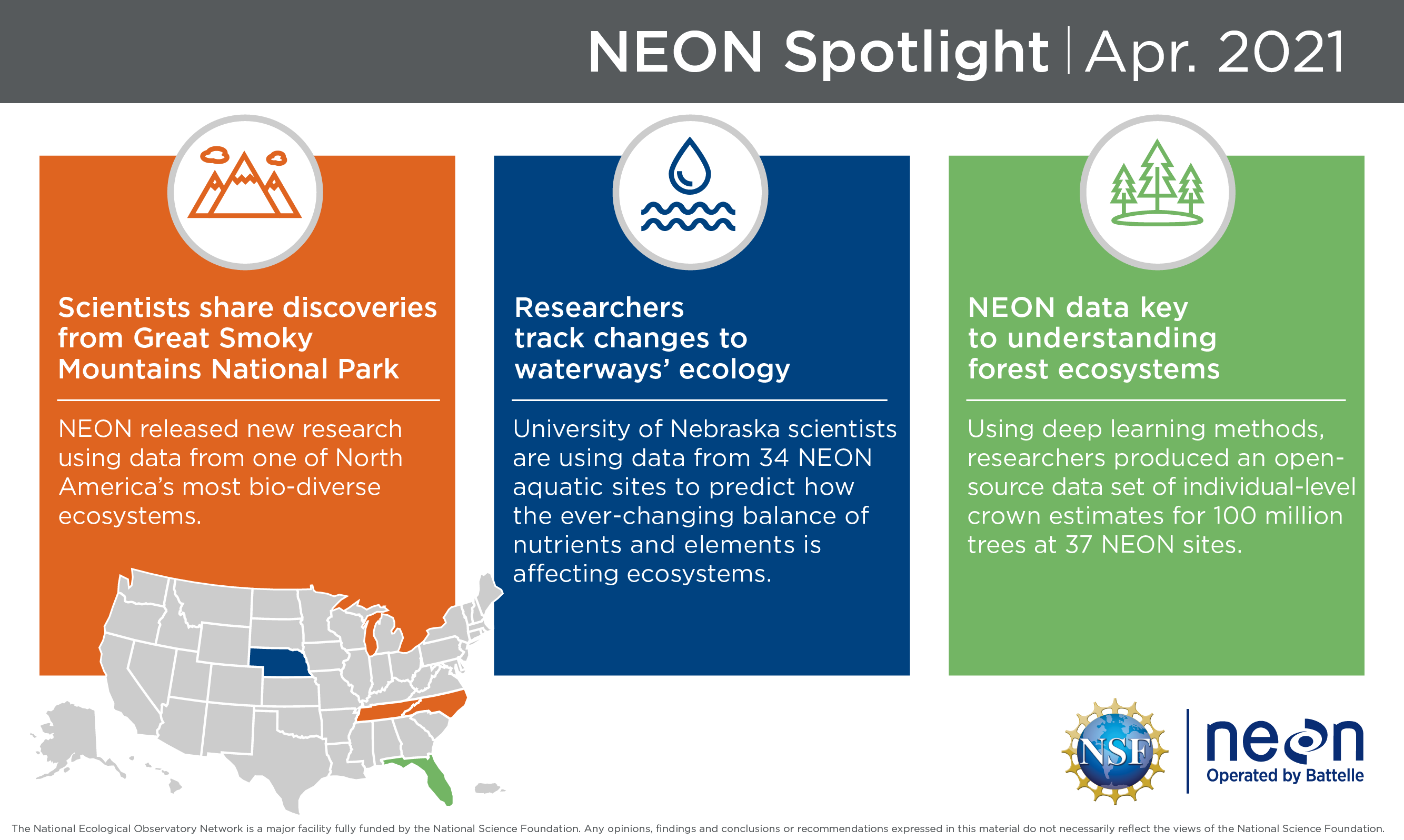April 2021: What’s New With NEON?

This month, we highlight several innovative ways researchers are using NEON data to improve our understanding of our world. From exploring biodiversity in the Great Smoky Mountains, tracking changes to waterways in the Midwest, and using advanced deep-learning techniques to understand how forest ecosystems are adapting to climate change, the knowledge gained through using NEON data is changing the way we understand our relationship with our natural surroundings.
This Month’s Spotlight
The latest news from NEON includes:
- NEON data is collected through studies in a wide range of specialties within ecology, including organismal observations, biogeochemistry, remote sensing, and micrometeorology. NEON researchers Sarah Szito and Marie Faust recently shared discoveries from the Great Smoky Mountains National Park NEON site at the Discover Life in American 2021 Science Colloquium, including how wildfires in the park have impacted the local ecosystem.
- The National Science Foundation awarded a $6 million grant to a team of scientists from the University of Nebraska-Lincoln, University of Wyoming, Middlebury College, and University of Central Arkansas to build a unique database on water systems across the country. Using data from 34 aquatic NEON sites, the team hopes to predict how the ever-changing balance of nutrients and elements is affecting ecosystems. “What’s exciting and new about this project is that we’re compiling a set of existing datasets that are located in different places or collected by different institutions and putting them together to ask broader-scale questions about ecology and evolution,” said Jessica Corman, assistant professor of natural resources at University of Nebraska—Lincoln. “This is the first time this type of work is being done on a regional or national scale.”
- Ecologists know that analyzing individual trees is crucial for understanding larger forest ecosystems but collecting data at an individual level can prove challenging. While advances in remote sensing have made surveying single trees easier, there is still a barrier in turning sensor data into tangible information. However, a group of scientists from the University of Florida used deep-learning methods to produce an open-source data set of individual-level crown estimates for 100 million trees at 37 NEON sites across the US. Using this novel data, researchers can drive a significant expansion of individual-level studies of trees by facilitating both regional analyses and cross-region comparisons, encompassing forest types from most of the country.
Sponsored by the National Science Foundation (NSF) and operated by Battelle, NEON is a continental-scale ecological observatory network dedicated to providing high-quality, consistently generated, standardized data that is free and available to all users. By enabling scientists, researchers, and students to address critical questions and understand ecosystem changes over time, the NEON program allows the ecological community to tackle questions and problems at a scale that was not possible before.
You can read about the latest work and research in the NEON Spotlight every month at Inside Battelle, and on our social media channels. For more information about NEON, visit NEONscience.org.
BATTELLE UPDATES
Receive updates from Battelle for an all-access pass to the incredible work of Battelle researchers.